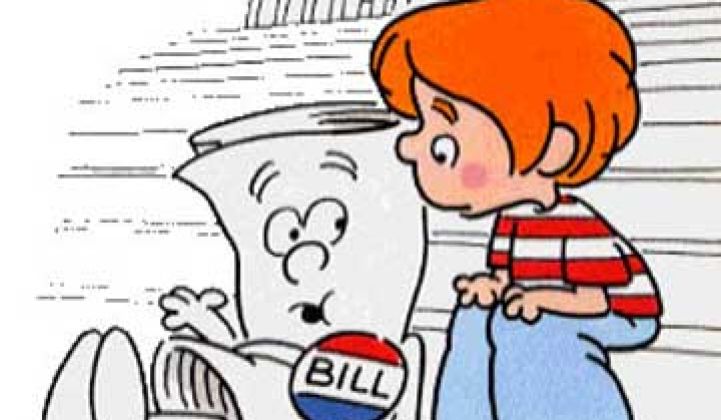President Obama signed the American Energy Manufacturing Technical Corrections Act (H.R. 6582) on Wednesday after the bill received bipartisan support in Congress.
The law is a modification of the Enabling Energy Savings Innovations Act (H.R. 4850) and includes elements of the Shaheen-Portman Senate bill.
Energy efficiency enthusiasts hailed the move, but also cautioned that there is far more work to be done.
“At a time that Washington is gridlocked, it is notable that the only energy bill with enough bipartisan support to pass is one that targets energy efficiency,” noted Steven Nadel, Executive Director of the American Council for an Energy-Efficient Economy. “This bill is a modest but bipartisan step forward, one we hope the next Congress can build upon.”
The bill had mostly minor changes to the current way of doing business. The highlights of the bill, which were listed by the Alliance to Save Energy, include:
- Coordination of research and development of efficiency technologies for industry;
- A study of barriers to industrial electrical efficiency;
- Best practices for advanced metering in the federal government;
- Disclosure of energy and water usage by federal facilities;
- Technical corrections and specific fixes to recently-enacted standards;
- Uniform treatment of conventional and tankless water heaters;
- Clarification of periodic review of commercial equipment standards and of DOE’s response to petitions regarding standards.
The bill also relaxes some standards, including rules for walk-in coolers, over-the-counter refrigerators and water heaters.
Energy efficiency advocates hope that this bill has laid the groundwork for more significant bills, such as the Shaheen-Portman bill, which call for stronger national model building codes, more loan guarantees for efficiency upgrades and increased research and development on energy efficiency. The American Council for an Energy-Efficient Economy supports the bills, but would also like to see changes to the tax code to spur investment in manufacturing efficiency.
"We commend the President on approving today important improvements to the nation’s energy efficiency laws,” said Graham Richard, CEO of Advanced Energy Economy. “The bipartisan support this legislation enjoys underscores that energy need not be politicized. Americans overwhelmingly believe that advanced energy is important to our economic future. The bill signed into law today points us in the right direction."
It’s not a stretch of the imagination that more energy efficiency legislation could pass in the new Congress. The Obama legislation is also working on its own front; the president is trying to pass HOMESTAR legislation that would help homeowners finance retrofits and a $4 billion “Better Building Initiative” that would make commercial facilities 20 percent more efficient by 2020. The president’s first term was also noted for its significant improvements in fuel standards in cars and trucks.
Even with a hopelessly gridlocked Congress, there are interesting actions happening at the city and state level. Energy benchmarking rules continue to find new markets. Low-cost software solutions are everywhere in the market to help building owners tackle wasted energy.
On the local and federal level, it’s hard to argue with the fact that energy efficiency is not just a money-saver, but also a job creator. It is that message that will be key in pushing through legislation amongst politicians, who love to toss around jobs numbers. After all, you can’t outsource retrofitting a window.



